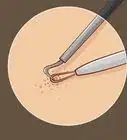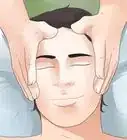This article was medically reviewed by Paul Friedman, MD. Paul Friedman, MD, is a Board-Certified Dermatologist, and the Director and Founder of the Dermatology & Laser Surgery Center in Houston, Texas. He has over 25 years of experience and specializes in Mohs micrographic surgery, dermatologic laser surgery, and cosmetic dermatology. Dr. Friedman is the current President of the American Society for Laser Medicine & Surgery and was named by Newsweek Magazine as one of the Best Dermatologists in America for Laser Treatments. His awards include the Husk Prize for his research in dermatologic surgery and the Young Investigator's Writing Competition Award of the American Society for Dermatologic Surgery. Dr. Friedman completed his dermatology residency at the New York University School of Medicine and received his medical degree with the highest honors from the University of Tennessee Health Science Center, College of Medicine.
There are 11 references cited in this article, which can be found at the bottom of the page.
This article has been viewed 69,766 times.
Deep pimples, also known as blind pimples, live deep within your skin and push on the nerves of your skin as they swell up, causing discomfort and pain. Deep pimples can take a long time to “come to a head” and may appear as large reddish bumps under the surface of your skin. You typically get deep pimples on your nose, your forehead, your neck, your chin, your cheeks, and behind your ears. To get rid of deep pimples, you need to decrease the amount of sebum on the surface of your skin, decrease cell debris on your skin, and decrease inflammation on your skin. You can do this by following proper facial hygiene, using steam cleaning and herbal treatments, and by adjusting your diet.
Steps
Using Proper Facial Hygiene
-
1Clean your face twice a day. To keep oil and dirt away, you will need to commit to a cleansing routine where you clean your face twice a day.[1] Use a plant based oil cleanser or a commercial cleanser than is non-comedogenic, meaning it will not clog your pores. Do not use products that contain alcohol, as they can irritate and dry out your skin.
- When applying the cleanser, use your fingertips and be gentle. Massage, rather than scrub your face, as scrubbing can cause permanent scarring on your skin.
- Make sure you also wash your face and body after any heavy sweating, such as after a workout.
-
2Do not poke, squeeze, or pop deep pimples. It may be tempting to try to pop your pimple so it goes away more quickly. But irritating the deep pimple can make it worse and lead to scarring as well as the development of other pimples.Advertisement
-
3Stay out of the sun. Try not to hang out all day in direct sunlight without sunscreen on or in tanning beds. The UV rays from the sun can damage your skin cells and weaken your skin.
Using Steam Cleaning
-
1Gather the necessary supplies. Steam cleaning can help to refresh your skin and help to sooth problem areas on your face, such as a deep pimple. You can also integrate essential oils in your steam clean to help “draw” out the deep pimple. You will need to following supplies:
- 1-quart pot
- Water
- A clean towel
- Essential oils
- Dried herbs, if you do not have access to essential oils
-
2Select one to two essential oils. You should use essential oils that have antibacterial or antiseptic properties and that can help to sooth the deep pimples.
- Spearmint or peppermint: Due to a high percentage of menthol, spearmint or peppermint has antiseptic and immune boosting properties.[2]
- Thyme: This herb can improve your immune system and is known to be antibacterial. It is also known to increase your blood circulation.[3]
- Lavender: This herb has soothing and calming properties. It also has antibacterial properties and can help with anxiety and depression.[4]
- Calendula: This herb can help to accelerate healing and also has antimicrobial properties.[5]
- Always pre-test the oil on a small area of your skin before you use it. This will confirm you are not allergic to the herbal oil. To test the oil, place one drop on your wrist and wait 10–15 minutes. Only use the oil for steam cleaning if there is no reaction on the surface of your skin.
-
3Wash your skin with a plant-oil based product. Use a hair tie to put your hair back so your face is exposed. Then, wash your face with a plant-oil based product. This will ensure it is clean and ready for steaming. Use oils like glycerin, grapeseed, and sunflower to create a plant-oil based product.
- Use your fingertips to apply the product to your face, gently massaging in circular motions. Wash your face for about a minute and then use lukewarm water to rinse your face, removing the cleanser.
- Pat your face dry with a clean towel.
-
4Heat essential oils to a boil in a pot of water. Use the 1-quart pot and fill it halfway with water. Place it on the stove and let it boil for one to two minutes. Make sure the water creates a nice flow of steam.
- Add one to two drops of the essential oils. Use dried herbs if you do not have access to herbal oils. Use ½ teaspoon of dried herbs per quart of water.
- Allow the water to boil for another minute and then take it off the heat. Be careful, as the pot will be hot. Shut off the stove and put the pot on an even surface in an open area.
-
5Use a towel to cover your head and place your face 12–15 inches from the water. Cover your head with the towel first so you can position your face 12–15 inches from the water. Doing this will cause your blood vessels to dilate and your pores to open up without damaging your skin with the steam.
- Close your eyes and breathe in and out deeply. Relax and be calm as the steam wafts over your face.
-
6Steam your face for 10 minutes. One minute in, remove your face from the steam and let your skin rest for 10 minutes. Only reheat the water and steam again if you do not have an allergic reaction to the oils in the steam after 10 minutes, with no sneezing or itching.
- Hold your face over the steam for up to 10 minutes. After 10 minutes, remove your face from the steam and rinse your skin with lukewarm water. Pat dry it with a towel.
-
7Moisturize your face. End the steam session by hydrating your face with natural oils or a non-comedogenic moisturizer. This will keep your skin soft and prevent damage to your skin.[6]
- Go for store-brand moisturizers that are labeled non-comedogenic or non-clogging, like Olay, Neutrogena, and Clinique moisturizers.
- For a natural option, go for natural oils that are high in non-comedogenic properties, such as hemp seed oil, shea butter, sunflower oil, castor oil, calendula oil, or argan oil.[7]
- Begin by moisturizing your face twice a day with natural oils, in the morning and at night. Do the steam treatment once a day, in the morning or the evening.
Using Herbal Treatments
-
1Apply green tea bags to the deep pimple. Green tea can act as an astringent and help to sooth the pimple while also killing off any bacteria or dirt.[8]
- Soak green tea bags in warm water. Then, apply the tea bags directly to the deep pimple to help draw out the pimple.
-
2Use apple cider vinegar on the deep pimple. Apple cider vinegar is another cheap and easy to use astringent that you can apply directly to the deep pimple.[9]
- Pour apple cider vinegar on a cotton ball or a Q-tip. Apply the ball or Q-tip to the deep pimple.
-
3Put tea tree oil on the deep pimple. Tea tree oil is a powerful herbal oil, as it is anti-bacterial, anti-fungal, and an astringent.[10]
- Pour tea tree oil on a cotton ball or a Q-tip. Apply the ball or Q-tip to the deep pimple.
-
4Make an herbal mask. You can put this mask over your entire face or use it as a spot treatment on deep pimples on your face.[11]
- Combine 1 tablespoon honey, one egg white, 1 teaspoon lemon juice, and ½ teaspoon of an essential oil, such as peppermint, spearmint, lavender, calendula, or thyme.
- Use your clean fingers to put the mask over your face, your neck, or on your deep pimple. Allow the mask to dry for 15 minutes and then rinse it off with lukewarm water. Pat dry your face and finish with a non-comedogenic moisturizer.
Exfoliating the Deep Pimple
-
1Do not squeeze or pop a deep pimple with a “head.” If the deep pimple comes to head and starts to develop a white spot or “head,” do not try to squeeze or pop the pimple. This can lead to more inflammation, an infection, and scarring. Instead, try to allow the pimple to drain naturally and heal on its own, with no scrubbing, poking, or popping.
- If you cannot leave the pimple alone, you can try to exfoliate it with natural, gentle scrubs; however, many skin specialists do not recommend exfoliation as it is a bit like pulling off a scab before it falls off on its own and can cause scarring on the surface of your skin.
- Gentle exfoliation can help to pull out any sebum, cell debris, or embedded hairs that are causing the deep pimple and speed up healing of the pimple.
-
2Use a honey-baking soda exfoliant. Combine honey with baking soda to make a paste that you apply directly to the deep pimple.
- In a small clean bowl, mix ¼ cup honey and 1 teaspoon of baking soda. Add enough baking soda to make a paste.
- Apply the paste with gentle, circular motions on the deep pimple or use a Q-tip to apply it to the pimple. Work the paste in gently for two to three minutes and then rinse it off with warm water.
-
3Try an oatmeal exfoliant. This exfoliant is another natural way to gently remove any dirt, cell debris, or embedded hairs in the deep pimple.
- Place ¼-½ cup rolled whole oats in a food processor or coffee grinder until they are ground to a fine texture. Add enough olive oil, jojoba oil, Vitamin E oil, avocado oil, or almond oil to the oats to make a paste.
- Apply the paste to the deep pimple with gentle, circular motions. You can also use a Q-tip to apply it. Massage the paste on the deep pimple for two to three minutes and then rinse it off with warm water.
-
4Apply a sugar-olive oil exfoliant. Olive oil is suggested for this exfoliant but you can use castor oil, jojoba oil, Vitamin E oil, avocado oil, or almond oil if you would prefer.
- Combine one teaspoon of sugar with ½ cup of the oil until it forms a paste.
- Apply the paste with gentle, circular motions on the deep pimple or use a Q-tip to apply it to the pimple. Work the paste in gently for two to three minutes and then rinse it off with warm water.
-
5Use a sea salt exfoliant. Sea salt is known to help improve the appearance of your skin and remove dirt and debris that can cause deep pimples.
- Mix one to two teaspoons of sea salt with enough olive oil to make a paste.
- Apply the paste to the deep pimple with gentle, circular motions. You can also use a Q-tip to apply it. Massage the paste on the deep pimple for two to three minutes and then rinse it off with warm water.
Adjusting Your Diet
-
1Consume foods with a low-glycemic index. Eating low-glycemic foods will allow sugars to release into your bloodstream at a slower pace. This allows your body to process the sugars more easily. Lower GI foods include:[12]
- Brain cereals, muesli, and rolled oats.
- Whole wheat, pumpernickel, and whole grain breads. Whole grains are also beneficial. The lowest GIs are located in whole grain pasta, barley, and brown rice.
- Most vegetables, except for beetroots, pumpkin, and parsnips.
- Most fruit, except for watermelon and dates. Fruits like mango, banana, papaya, pineapple, raisins, and figs have a medium GI index.
- Nuts.
- Legumes.
- Yogurt.
-
2Have foods high in Vitamin A. Vitamin A helps to maintain healthy skin and prevent acne such as deep pimples. Look for Vitamin A high foods such as:[13] [14]
- Vegetables like sweet potato, spinach, carrots, pumpkin, broccoli, red peppers, summer squash.
- Fruit like cantaloupe, mangoes, and apricots.
- Legumes like black eyed peas.
- Meat and fish, particularly beef liver, herring, and salmon.
-
3Have foods high in Vitamin D. This vitamin can help your skin stay healthy and fresh. Look for Vitamin D high foods such as:[15]
- Fish like cod liver, salmon, and tuna.
- Dairy in the form of milk, yogurt, and cheese.
- Vitamin D can also be absorbed through exposing yourself to the sun at least 10–15 minutes a week. Always wear sunscreen to protect your skin from UV rays.
-
4Eat omega-3 fatty acid foods. Omega-3 fatty acids can help give you a natural glow and prevent the development of acne, including deep pimples. Look for foods high in omega-3 fatty acid such as:
- Seeds and nuts like flaxseeds and flaxseed oil, chia seeds, butternuts, walnuts.
- Fish like salmon, sardines, mackerel, and whitefish.
- Vegetables like spinach, sprouted radish seeds, and Chinese broccoli.
- Cook with herbs like basil, oregano, cloves, and marjoram.
-
5Do not eat foods high in processed and artificial sugars. Stay away from these types of foods, as bacteria loves sugar and feeds off of it, leading to the development of more acne. Look at the labels of food at the grocery store before buying it to confirm it does not contain any processed or artificial sugars.
Expert Q&A
Did you know you can get expert answers for this article?
Unlock expert answers by supporting wikiHow
-
QuestionWhat is the fastest way to get rid of a pimple?
 Paul Friedman, MDPaul Friedman, MD, is a Board-Certified Dermatologist, and the Director and Founder of the Dermatology & Laser Surgery Center in Houston, Texas. He has over 25 years of experience and specializes in Mohs micrographic surgery, dermatologic laser surgery, and cosmetic dermatology. Dr. Friedman is the current President of the American Society for Laser Medicine & Surgery and was named by Newsweek Magazine as one of the Best Dermatologists in America for Laser Treatments. His awards include the Husk Prize for his research in dermatologic surgery and the Young Investigator's Writing Competition Award of the American Society for Dermatologic Surgery. Dr. Friedman completed his dermatology residency at the New York University School of Medicine and received his medical degree with the highest honors from the University of Tennessee Health Science Center, College of Medicine.
Paul Friedman, MDPaul Friedman, MD, is a Board-Certified Dermatologist, and the Director and Founder of the Dermatology & Laser Surgery Center in Houston, Texas. He has over 25 years of experience and specializes in Mohs micrographic surgery, dermatologic laser surgery, and cosmetic dermatology. Dr. Friedman is the current President of the American Society for Laser Medicine & Surgery and was named by Newsweek Magazine as one of the Best Dermatologists in America for Laser Treatments. His awards include the Husk Prize for his research in dermatologic surgery and the Young Investigator's Writing Competition Award of the American Society for Dermatologic Surgery. Dr. Friedman completed his dermatology residency at the New York University School of Medicine and received his medical degree with the highest honors from the University of Tennessee Health Science Center, College of Medicine.
Board Certified Dermatologist, American Board of Dermatology If somebody has an isolated acne lesion and has an important engagement coming up, they can go into a dermatologist's office for an injection of an intralesional steroid. The process must be done by an experienced dermatologist, but that would be the main mechanism in terms of quickness of response. Otherwise, over-the-counter products such as Differin, which is a vitamin A cream, are going to be your best bet.
If somebody has an isolated acne lesion and has an important engagement coming up, they can go into a dermatologist's office for an injection of an intralesional steroid. The process must be done by an experienced dermatologist, but that would be the main mechanism in terms of quickness of response. Otherwise, over-the-counter products such as Differin, which is a vitamin A cream, are going to be your best bet.
References
- ↑ Paul Friedman, MD. Board Certified Dermatologist, American Board of Dermatology. Expert Interview. 8 April 2020.
- ↑ Kamatou GP, Vermaak I, Viljoen AM, Lawrence BM., Menthol: a simple monoterpene with remarkable biological properties.Phytochemistry. 2013 Dec;96:15-25.
- ↑ Fournomiti M, Kimbaris A, Mantzourani I, Plessas S, Theodoridou I, Papaemmanouil V, Kapsiotis I, Panopoulou M, Stavropoulou E, Bezirtzoglou EE, Alexopoulos A. Antimicrobial activity of essential oils of cultivated oregano (Origanum vulgare), sage (Salvia officinalis), and thyme (Thymus vulgaris) against clinical isolates of Escherichia coli, Klebsiella oxytoca, and Klebsiella pneumoniae. Microb Ecol Health Dis. 2015 Apr 15;26:23289.
- ↑ Sienkiewicz M, Głowacka A, Kowalczyk E, Wiktorowska-Owczarek A, Jóźwiak-Bębenista M, Łysakowska M.The biological activities of cinnamon, geranium and lavender essential oils. Molecules. 2014 Dec 12;19(12):20929-40.
- ↑ Efstratiou E, Hussain AI, Nigam PS, Moore JE, Ayub MA, Rao JR.Antimicrobial activity of Calendula officinalis petal extracts against fungi, as well as Gram-negative and Gram-positive clinical pathogens.Complement Ther Clin Pract. 2012 Aug;18(3):173-6
- ↑ Paul Friedman, MD. Board Certified Dermatologist, American Board of Dermatology. Expert Interview. 8 April 2020.
- ↑ https://www.beneficialbotanicals.com/facts-figures/comedogenic-rating.html
- ↑ Murphy, K. (2010) Reviews of articles on medicinal herbs. Australian Journal of Medical Herbalism, 22(3), 100-103.
- ↑ Fournomiti M, Kimbaris A, Mantzourani I, Plessas S, Theodoridou I, Papaemmanouil V, Kapsiotis I, Panopoulou M, Stavropoulou E, Bezirtzoglou EE, Alexopoulos A. Antimicrobial activity of essential oils of cultivated oregano (Origanum vulgare), sage (Salvia officinalis), and thyme (Thymus vulgaris) against clinical isolates of Escherichia coli, Klebsiella oxytoca, and Klebsiella pneumoniae. Microb Ecol Health Dis. 2015 Apr 15;26:23289.
- ↑ Fournomiti M, Kimbaris A, Mantzourani I, Plessas S, Theodoridou I, Papaemmanouil V, Kapsiotis I, Panopoulou M, Stavropoulou E, Bezirtzoglou EE, Alexopoulos A. Antimicrobial activity of essential oils of cultivated oregano (Origanum vulgare), sage (Salvia officinalis), and thyme (Thymus vulgaris) against clinical isolates of Escherichia coli, Klebsiella oxytoca, and Klebsiella pneumoniae. Microb Ecol Health Dis. 2015 Apr 15;26:23289.
- ↑ Fournomiti M, Kimbaris A, Mantzourani I, Plessas S, Theodoridou I, Papaemmanouil V, Kapsiotis I, Panopoulou M, Stavropoulou E, Bezirtzoglou EE, Alexopoulos A. Antimicrobial activity of essential oils of cultivated oregano (Origanum vulgare), sage (Salvia officinalis), and thyme (Thymus vulgaris) against clinical isolates of Escherichia coli, Klebsiella oxytoca, and Klebsiella pneumoniae. Microb Ecol Health Dis. 2015 Apr 15;26:23289.
- ↑ http://www.the-gi-diet.org/lowgifoods/
- ↑ http://www.ncbi.nlm.nih.gov/pmc/articles/PMC2836431/#R5
- ↑ http://ods.od.nih.gov/factsheets/VitaminA-HealthProfessional/
- ↑ http://ods.od.nih.gov/factsheets/VitaminD-HealthProfessional/
About This Article
To get rid of a deep pimple underneath your skin, start by washing your face with a plant-oil based, non-comedogenic cleanser that won't clog your pores. Next, select 1-2 essential oils with antibacterial or antiseptic properties, like spearmint, lavender, or calendula. If you have not used essential oils before, place a drop on your wrist to make sure you are not allergic. Then, fill half of a 1-quart pot with water and let it boil for 1-2 minutes before adding 1-2 drops of essential oil. After another minute, remove the pot from heat, place a towel on your head, and keep your face 12-15 inches from the steaming water for 10 minutes. Once you're done, use a non-comedogenic moisturizer to keep your skin soft and prevent damage. For more advice from our Medical co-author, including how to use herbal treatments to get rid of a deep pimple, scroll down.
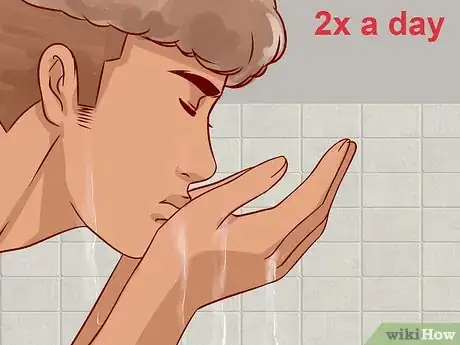

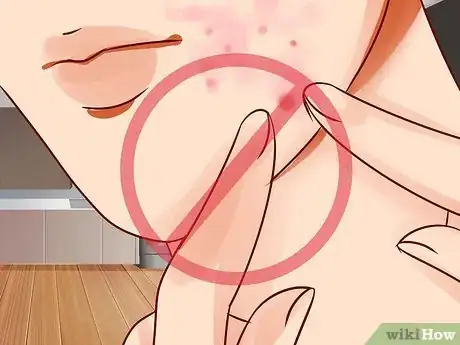

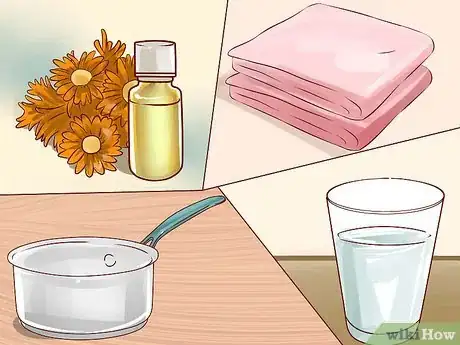

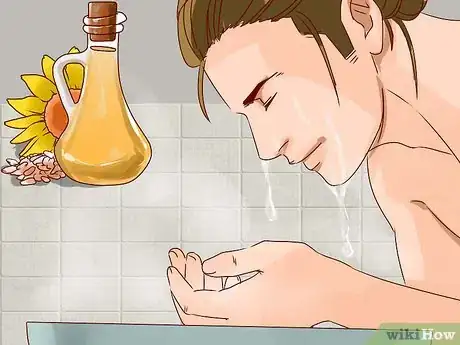
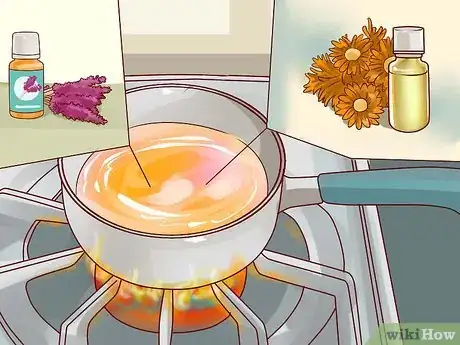
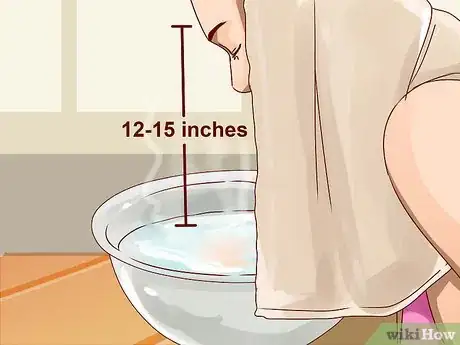

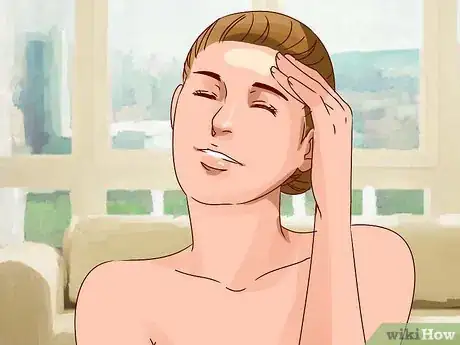
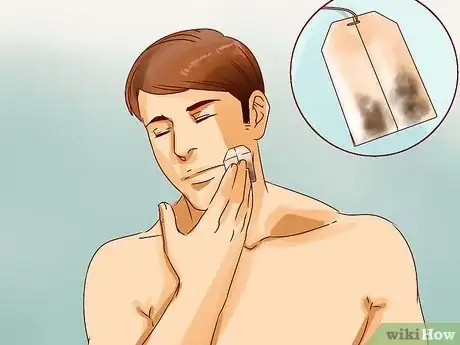
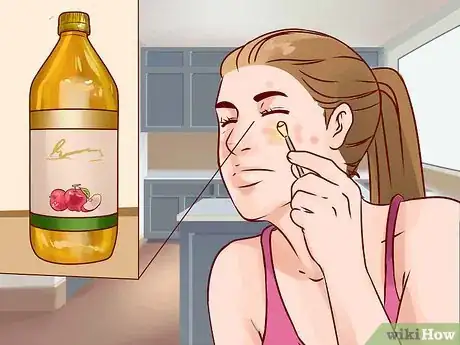
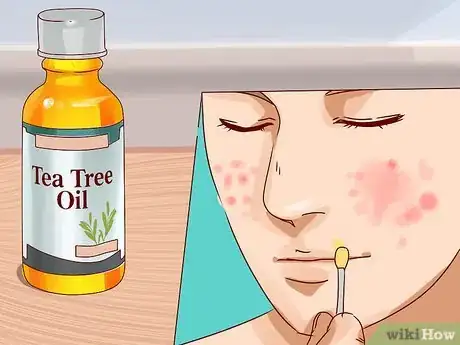
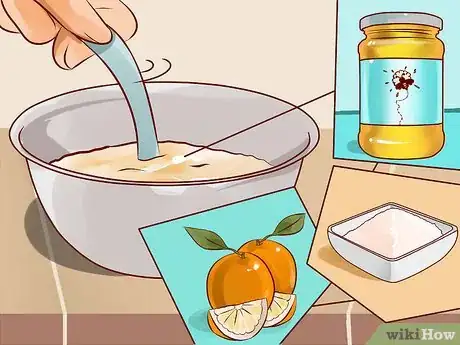
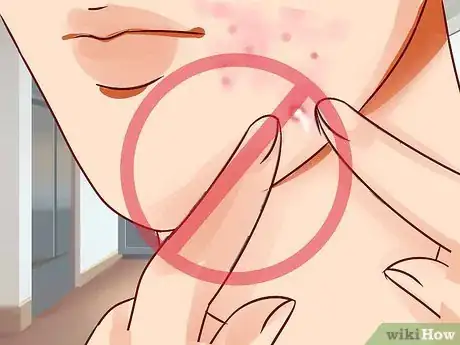

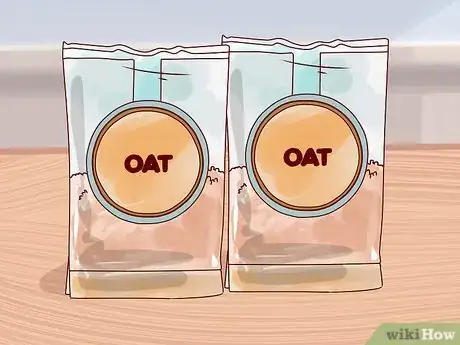

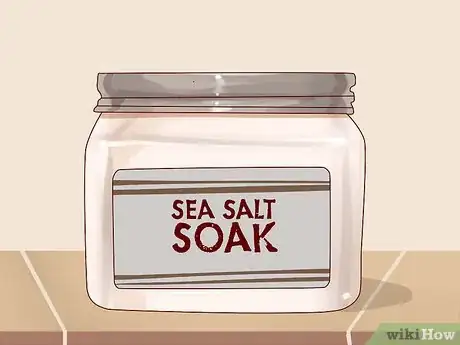
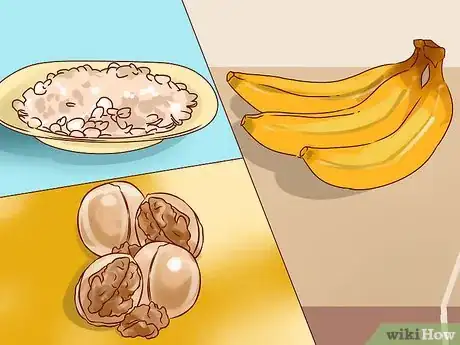
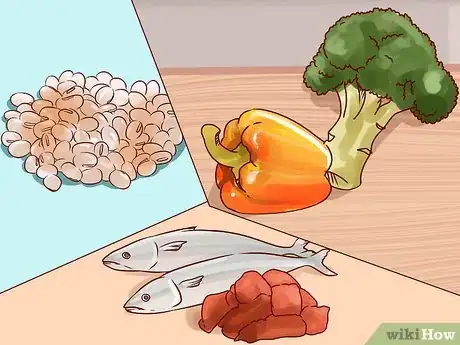

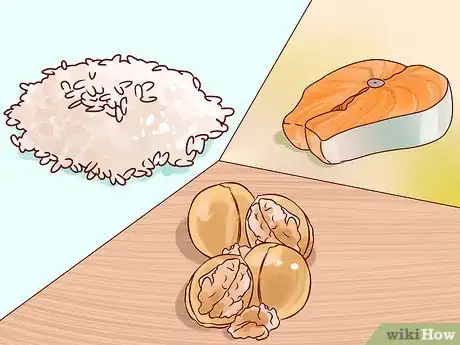
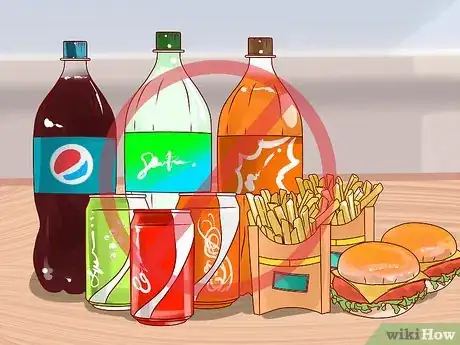

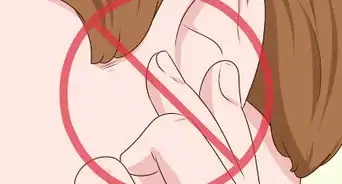


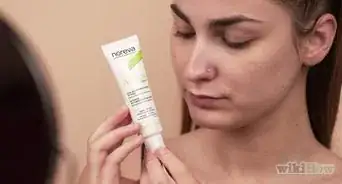

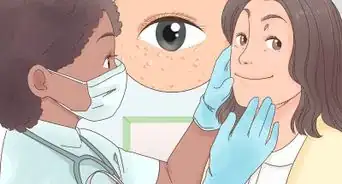

-Step-9.webp)








